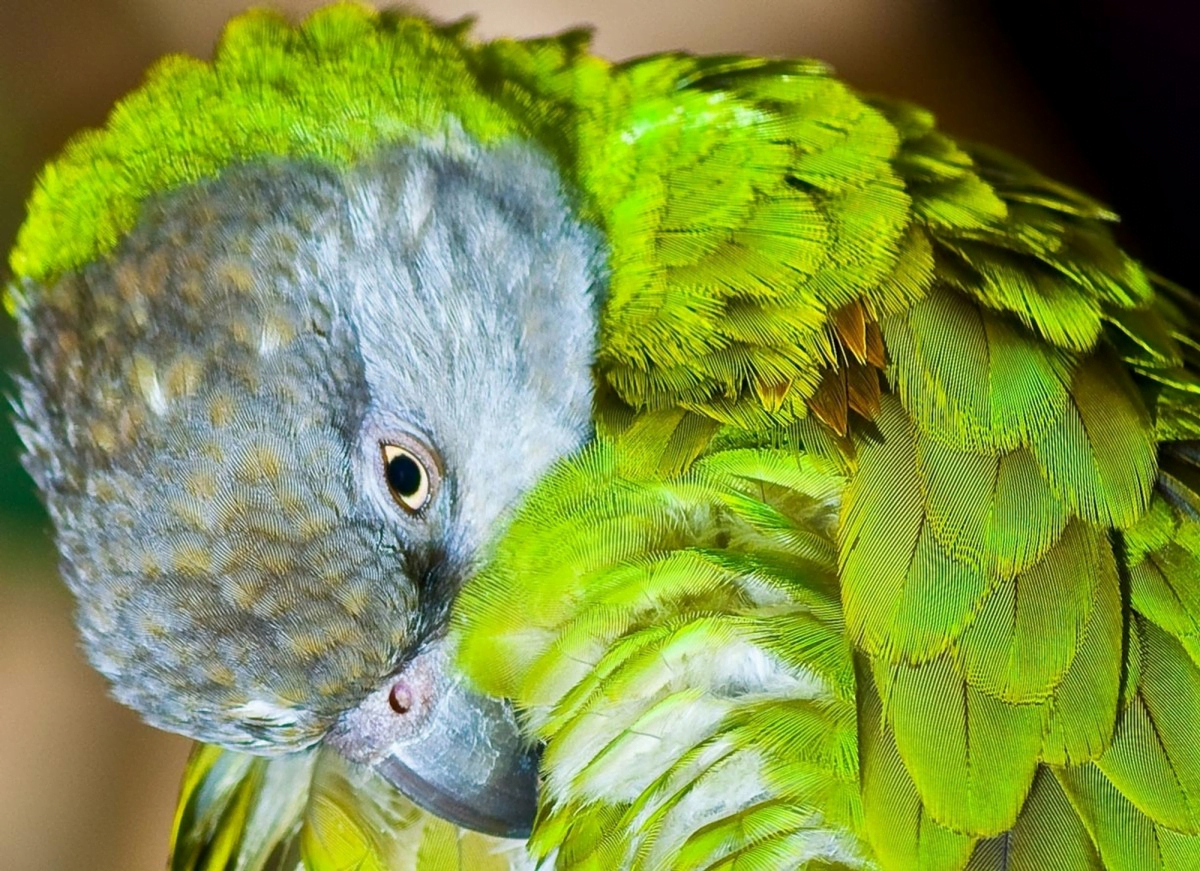Did you know that the African Senegal parrot is one of the most charismatic and intelligent birds you can welcome into your home? These vibrant creatures are not just a feast for the eyes with their stunning green and yellow feathers, but they also bring a unique blend of companionship and entertainment.
However, diving into the world of parrot ownership is no small feat. It requires understanding their complex needs, from dietary preferences to social interaction. This post sheds light on what makes the African Senegal parrot a fascinating pet choice while guiding potential owners through the essentials of care, ensuring these feathered friends thrive in their new homes.
Key Takeaways
- African Senegal parrots are a vibrant and engaging species, ideal for those seeking a medium-sized, intelligent pet bird.
- Regular veterinary check-ups and a balanced diet are crucial for maintaining the health of an African Senegal parrot, preventing common health issues.
- These parrots require a stimulating environment with plenty of toys and interaction to thrive, highlighting the importance of mental and physical engagement.
- Understanding the unique care needs of African Senegal parrots, including their social nature and potential for noise, helps in creating a harmonious living environment.
- Prospective pet owners should consider the long lifespan of African Senegal parrots, preparing for a commitment that can last several decades.
- The miscellaneous section underscores the importance of researching specific care requirements and personality traits to ensure a good match between the parrot and its human companions.
Breed Overview
History
The Senegal parrot first caught the attention of the scientific community in 1760 thanks to Mathurin Jacques Brisson. His initial descriptions laid the groundwork for further studies. Later, Carl Linnaeus and William John Swainson contributed to its taxonomic classification, placing it firmly within the avian world’s scholarly records.
In their native Africa, these birds were once considered pests by farmers due to their fondness for crops. However, their vibrant personalities and striking colors soon made them popular in aviculture. This transition from farm pest to favored pet highlights a significant change in human perception over centuries.
Physical Characteristics
Adult Senegal parrots boast a distinctive look with their charcoal grey heads contrasted by vivid yellow underparts. They are relatively small birds, typically weighing between 120 to 170 grams, making them a compact choice for bird enthusiasts.
A notable feature is the change in iris color as they age. Juveniles start with dark grey irises that gradually lighten to grey or yellow as they mature. This subtle yet fascinating transformation adds an extra layer of interest for prospective owners.
Personality and Temperament
Senegal parrots have earned a reputation for being playful companions but can also show a moody side, occasionally becoming nippy. Their intelligence is a standout trait, enabling them to form deep bonds with their owners when properly socialized.
They possess vocal abilities that include mimicking sounds at moderate noise levels. This makes them less disruptive than some larger parrot species while still allowing them to be engaging pets.
Health And Care
Common Health Issues
Senegal parrots, like all birds, can face health challenges. Psittacosis, feather plucking, and obesity are common issues. Regular vet check-ups help catch these early. A balanced diet and exercise prevent many problems.
Diet and activity level greatly impact a Senegal parrot’s health. Without proper care, they may develop serious conditions. Owners should watch for any signs of illness.
Dietary Needs
In the wild, Senegal parrots feast on fruits, seeds, and blossoms. This variety is key to their health. Captive birds need a balanced diet too. It should include pellets, fresh fruits, and vegetables.
e foods are dangerous for parrots. Avocado and chocolate can be toxic. Owners must avoid these to keep their birds safe.
Exercise Requirements
Senegal parrots need daily exercise outside their cage. This keeps them fit and mentally sharp. Safe flying areas or play with toys are good options.
Interaction with owners is also vital for their well-being. It provides social exercise that’s crucial for their mental health.
Grooming
Regular nail trims prevent injuries caused by overgrown nails. Occasional showers or baths keep their feathers in good condition.
Beak maintenance is important but often managed through proper toys and diet. These practices ensure a healthy bird.
Living with a Quaker Parrot
Training and Socialization
Senegal parrots shine in their ability to learn. They can pick up tricks and commands, thanks to their sharp intellect. This makes training not just possible but enjoyable for both the bird and its owner. However, it’s crucial to start early. The younger the parrot, the easier it is to mold its behavior.
Anializing these birds early helps prevent aggression and fearfulness later on. It’s about building trust. Owners should introduce their Senegal parrots to various people and situations gradually but consistently.
Positive reinforcement techniques work best for training. Rewards like treats or verbal praise encourage good behavior. Consistency is key here. Repetition helps the bird understand what’s expected of them.
Environment
A spacious cage is non-negotiable for a Senegal parrot. They need room to fly and exercise within their home. Without enough space, they can become stressed or develop health issues.
It’s beneficial to place the cage in a social area of your home. This encourages interaction and prevents loneliness. Birds are social creatures by nature.
Owners must be aware of environmental hazards too. Toxic fumes from Teflon pans or aerosols are dangerous for birds. Ventilation is important, as well as keeping harmful substances away from their living space.
Activities They Enjoy
Interactive toys and puzzles are great for stimulating a Senegal parrot’s intellect. These also satisfy their natural chewing instincts, which is vital for their wellbeing.
Playtime activities like fetch or hide-and-seek cater to their playful nature. Such games strengthen the bond between the bird and its owner while providing mental stimulation.
Creating a bird-safe play area outside the cage is another way to enrich their environment. Perches, toys, and even simple objects can turn into sources of entertainment for these curious birds.
Misc.
Popular Names
Senegal parrots often get names that reflect their vibrant personalities or striking appearances. Many owners opt for African-themed names, like Nairobi, Zulu, or Kofi, paying homage to the bird’s origins. This trend celebrates the rich heritage of these birds and connects them to their African roots.
Others choose names based on the bird’s unique characteristics. For instance, a Senegal parrot with a knack for mimicry might be named Echo. A particularly adventurous bird could be called Marco, after Marco Polo. Such names highlight the individuality of each bird, making the naming process both personal and meaningful.
Fun Facts
Senegal parrots stand out because they aren’t sexually dimorphic. This means males and females look alike, which is rare among parrots. They can live up to 50 years in captivity with proper care. This long lifespan makes them lifelong companions for those willing to commit.
They migrate within West Africa, searching for food as seasons change. This behavior showcases their adaptability and the deep connection they have with their natural habitat.
Common Myths
Despite popular belief, Senegal parrots are not always quiet. They can produce loud vocalizations when excited or seeking attention. Their need for stimulation and interaction is often underestimated too. These birds thrive on mental challenges and social engagement.
Another myth is that they don’t require social interaction. In reality, Senegal parrots are quite sociable. They form strong bonds with their owners and can become lonely without regular interaction.
Most Similar Breed
The Meyer’s parrot is the Senegal parrot’s closest relative within the Poicephalus genus. Both share similar sizes and temperaments, making them equally suited for pet lovers who enjoy interactive birds.
However, differences in coloration set them apart visually. While habitat preferences overlap, each species has adapted uniquely to its environment. The Senegal parrot’s distinct behaviors and vocal patterns distinguish it from other members of its genus.
Final Remarks
Diving into the world of African Senegal parrots, you’ve journeyed from understanding their unique traits in our breed overview to mastering the nuances of their care and health. We’ve even ventured into the dynamics of living with a Quaker Parrot, rounding off with some miscellaneous pearls of wisdom. These colorful characters are more than just pets; they’re companions that bring vibrancy and joy into your lives. Embracing their care is not just about responsibility but about fostering a deep, enriching bond that lasts a lifetime.
Now, armed with knowledge and insights, the ball’s in your court. Whether you’re pondering the idea of welcoming one into your home or looking to enhance your existing feathered friendship, remember, it’s the little moments and the shared bonds that make this journey unforgettable. So why wait? Dive deeper, explore further, and let your adventure with these fascinating creatures unfold. Your feathered friend awaits.
Frequently Asked Questions
What is an African Senegal Parrot?
The African Senegal Parrot is a vibrant, medium-sized bird known for its charming personality and striking green, orange, and grey plumage. They’re intelligent, social creatures that thrive on interaction with their human families.
How long do African Senegal Parrots live?
With proper care, these parrots can live up to 50 years. It’s a long-term commitment, kind of like marrying into royalty; they’re with you for life.
What should I feed my African Senegal Parrot?
Feed them a balanced diet of pellets, fresh fruits, and vegetables. Think of it as preparing a meal for a tiny, feathered health nut – variety is key!
Are African Senegal Parrots good for families?
Absolutely! They’re known for their playful nature and ability to bond with multiple family members. Just like inviting a mini comedian into your home, they keep everyone entertained.
Do African Senegal Parrots talk?
Yes, they are quite the chatterboxes. With patience and training, they can mimic words and sounds. Imagine having a feathery friend who can join in on the gossip!
How much exercise does an African Senegal Parrot need?
They require daily playtime outside their cage to stretch their wings and explore. Think of it as their personal gym session; only it’s more fun and involves toys.
Can I keep an African Senegal Parrot if I live in an apartment?
Yes, but remember they can be quite vocal. It’s like having a small opera singer at home; delightful but occasionally loud for neighbors.


 Creator: Tambako The Jaguar
Creator: Tambako The Jaguar  Creator: AndyGoodwin
Creator: AndyGoodwin 



0 Comments